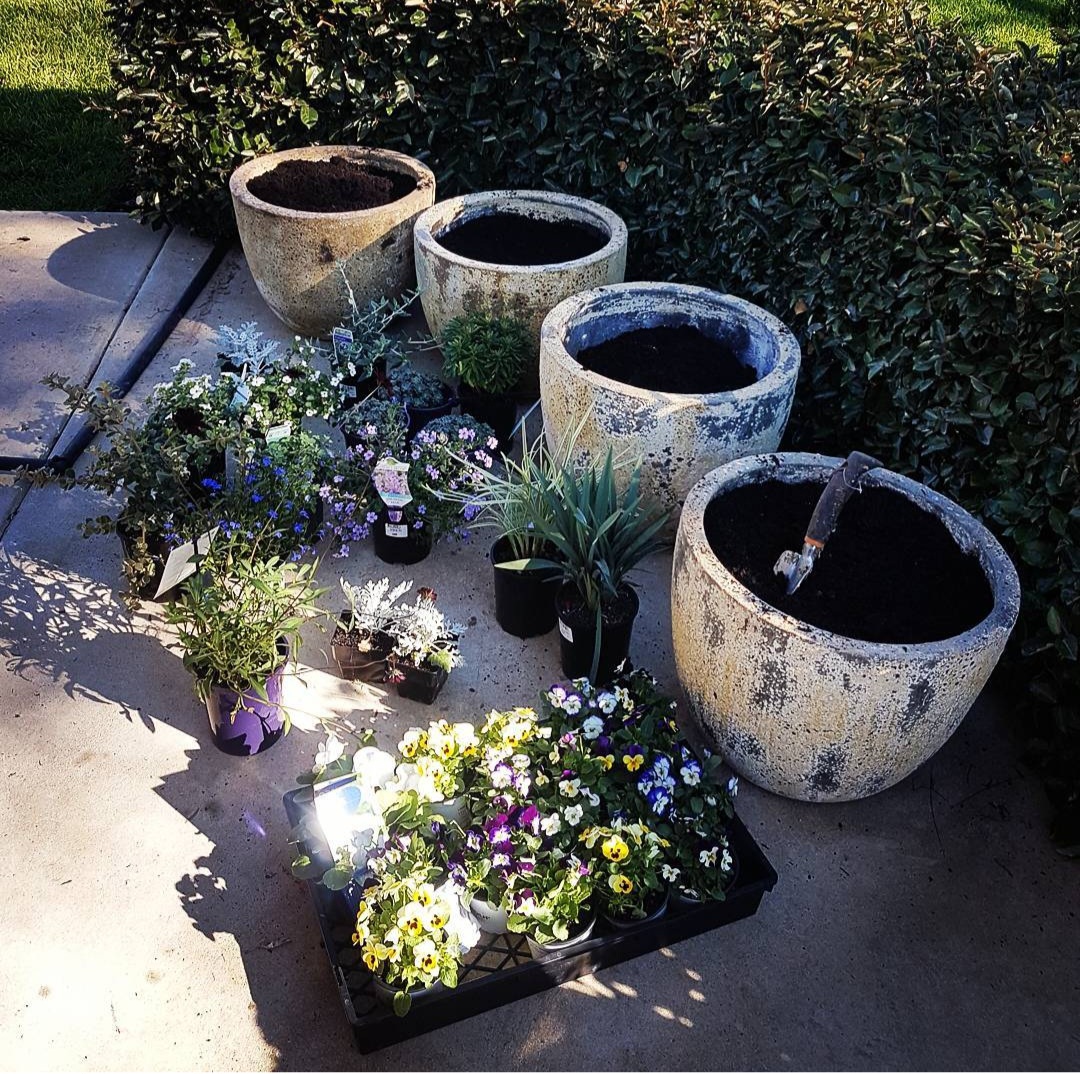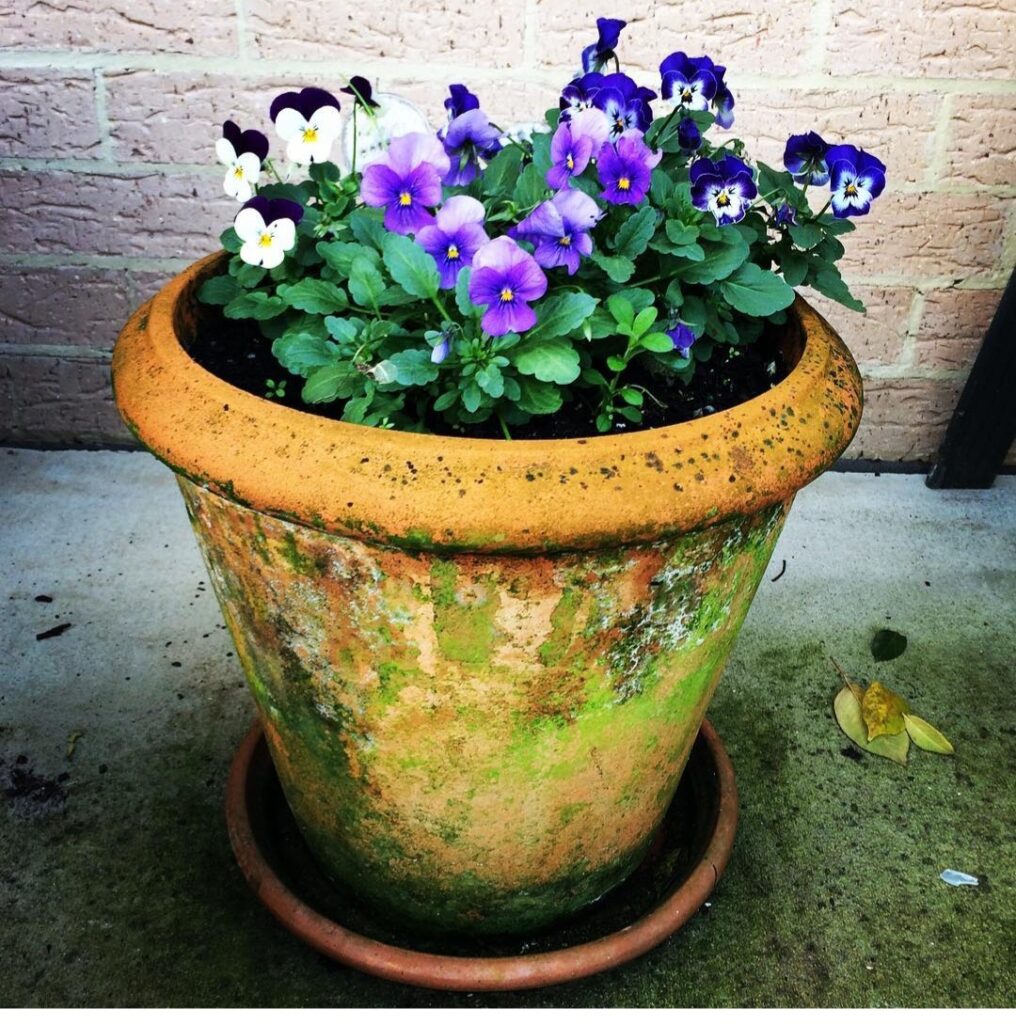
10 Jul Colour In The Garden For Winter
Ever since I was a child I have loved growing winter annuals, particularly pansies and violas. My parents always had a lovely display of winter and spring/summer flowers dedicating whole garden beds and large pots to them. Dad is a very authentic, traditional gardener who gets great satisfaction in working the soil, planting a seedling and then seeing the plants flourish. If that plant has a flower well that is a bonus and he would always point out to me as a young child the great beauty in the smallest details. This appreciation is still in grained in me today and is a huge reason why I do what I do. In the early 1980’s as a family we would take picnics into the Royal Botanical Gardens in the city of Sydney or to Centennial Park (located in the Eastern Suburbs of Sydney) to admire their spectacular annual bedding displays. These displays were on a large scale with thousands of different coloured annuals. The seasonal displays do still happen each season to a certain extent but on a smaller scale and with more water conscious plantings.
The other annual displays I admire and have always influenced me are the window boxes and hanging baskets that you see throughout summertime in Europe. These displays are overflowing eye catching, masses of colour that need to be seen to be believed. I always wondered how these displays were created with so many different plants within the one box or basket. However I soon found out how they are created when I visited the flower markets in Paris and saw all of these tiny pots overflowing with large flowering plants. They were almost the size of a tube stock plant however the plants were annuals and they were 3 times the size of a seedling you would buy here. It also wasn’t just annual growing plants it was many perennials, small shrubs, ground covers and ornamental grasses. Seeing these plants also inspired me to add perennials in with the annuals for my potted displays.

What are the best annuals plants for winter colour? Pansy, Stock, Alyssum, Violas, Dianthus, Calendula, Lobelia, Primulas, Polyanthus, Cineraria, Silver Leaved Dusty Miller, Wall flowers. You could also add in herbs or early spring flowering bulbs such as Daffodils or Jonquils. Don’t be scared of adding some perennials too that can be relocated to garden beds at the end of the season or reused in the pots and planted out with summer annuals later in the year.
Layout of plantings
Ideally when you plant out a potted display it is good to have three levels of planting or as the famous gardener Monty Don says “always have a pillar plant, a filler and a spiller” This simply means to have a low growing or groundcover plant, then a mid level plant and then something as a taller stand out plant for height.

Colour of flowers and or foliage
Using colour in the garden is much like selecting paint from a paint colour chart the selection of plants will be endless. A colour is determined by the hue it is for example red, blue or yellow. It is described by its intensity or strength for example bright or dull. It is then determined by its tone of either light or dark. You do need to consider both the plant’s flower colour and foliage colour. These colours will have to work together to create your garden like the way colours work together in a painting. The way you group these colours is a matter of taste, there is not a right or wrong way. Sometimes gardeners use the colour wheel when selecting their plants for the garden. Many people would be familiar with the colour wheel which was originally developed by Sir Isaac Newton. The “Colour Wheel” has been modified over the years. The wheel divides the colour spectrum into cool and warm colours. Starting with the fiery reds and golden yellows the wheel spins through the more subtle greens and then ends up with the fresh blues, violets and purples. If you do want to plant out in colour themes you can use the colour wheel. It is a great tool. For contrasting colours they are those that are opposite each other on the colour wheel. Like purple and orange These tend to have a more eye-catching effect. Each colour is competing for an equal amount of attention, harmonizing colours are those that are next to each other on the colour wheel like blue and yellow. These tend to complement each other and have a more relaxing effect. All different colours will give you a rainbow effect. This may look chaotic to some people others will find it to be a spectacular joyful display which is playful and fun. Monochrome – Using one colour in the garden could be considered boring by some but to the more conservative gardener it may give a calming effect. You can also select flower colour combinations that you like. I love to use yellow and white together or purple with shades of orange or any tones of blue with white or a pale lemony yellow.
What is the best soil to use ?
When you plant any plants in pots it is important to use a good quality potting mixture. Soil in pots will leach out the nutrients much quicker in a pot than it does when dug through soil. Ideally always use a potting mix that has a red tick with premium grade marked on it. This red tick means that it is a high-quality blend of organic materials, including nursery potting mix, water-saving ingredients including Hydrogel water-holding crystals, expanded shale, and coconut coir. You will see a black tick on some potting mixtures these are not as good a quality and will be cheaper to buy. If you use these soils you will need to add other compost and or fertiliser to ensure that the plants will reach their full potential.
When it comes to planting unlike most other plants, annuals don’t need to have their roots teased out too much, if at all. Teasing out the roots can do more damage than good to them. The roots are so fine and delicate you can easily damage them. Always select a good size pot so that the plants are not going to dry out too quickly.
Which fertiliser is best to use on my annuals?
Annuals will require a fertiliser that is higher in potassium. This is the element that will encourage more flowering. I would normally use a liquid fertiliser at this time of year as it will give the plants an instant boost. There are many different liquid fertilisers available on the market however I find Thrive (in powder form) to be a good one to use. You can also use it on nearly every plant to encourage fruiting and flowering. It will need to be applied once a week on your annuals
Should I use mulch on my annuals?
I like to use sugar cane or tea tree mulch on potted plants. Both have fine particles so they won’t prevent the growth of the soft wooded plants. They will finish off the pot nicely, help suppress weeds and hold moisture in the pot.
On going maintenance
-Water all new plantings in well after planting. You will need to monitor watering
depending on location. If you use saucers under your pots ensure that they aren’t left standing in saucers of water for long periods of time especially if you have long periods of continued rain.
-Always ensure that your pot location will get enough sun for the flowering to continue.
-Continue to dead head flowering annuals regularly to encourage more flowers. -Once each flower is finished cut off at base and this will help the next batch of flowers to open.


